wonder if anyone can help me. I have an app and I'm trying to move some files into iCloud so they'll show up in "Files" and cloud to other devices. I've been going through lots of resources online researching what's wrong, and nothing seems to help.
In my app project, I have turned on iCloud Documents in capabilities.
In my plist file, I have this:
<key>NSUbiquitousContainers</key>
<dict>
<key>iCloud.com.mypublishername.myappname</key>
<dict>
<key>NSUbiquitousContainerIsDocumentScopePublic</key>
<true/>
<key>NSUbiquitousContainerName</key>
<string>myappname</string>
<key>NSUbiquitousContainerSupportedFolderLevels</key>
<string>Any</string>
</dict>
</dict>
In my entitlements file I have:
<dict>
<key>com.apple.developer.icloud-container-identifiers</key>
<array>
<string>iCloud.com.mypublishername.myappname</string>
</array>
<key>com.apple.developer.icloud-services</key>
<array>
<string>CloudDocuments</string>
</array>
<key>com.apple.developer.ubiquity-container-identifiers</key>
<array>
<string>iCloud.com.mypublishername.myappname</string>
</array>
</dict>
in ObjC, I'm fetching the iCloud folder like so:
NSURL *rootDirectory = [[[NSFileManager defaultManager] URLForUbiquityContainerIdentifier:nil]URLByAppendingPathComponent:@"Documents"];
if (rootDirectory)
{
if (![[NSFileManager defaultManager] fileExistsAtPath:rootDirectory.path isDirectory:nil]) [[NSFileManager defaultManager] createDirectoryAtURL:rootDirectory withIntermediateDirectories:YES attributes:nil error:nil];
gCloudFolder=rootDirectory;
}
Then, when I save a file, I do so locally, and move it into the cloud folder like this:
//
// theFilename is a file in the app's documents folder...
//
int aFile=creat(theFilename,S_IREAD|S_IWRITE);close(aFile);
aFile=open(theFilename,O_BINARY|O_RDWR);
if (aFile)
{
write(aFile,theDataPtr,theLen);
close(aFile);
if (gCloudFolder)
{
NSURL *aLocalStr=[NSURL fileURLWithPath:[NSString stringWithUTF8String:theFilename]];
NSURL *aCloudStr=[gCloudFolder URLByAppendingPathComponent:@"testing_file.txt"];
NSError *error;
if (![[NSFileManager defaultManager] setUbiquitous:YES itemAtURL:aLocalStr destinationURL:aCloudStr error:&error]) NSLog(@"iCloud Error occurred: %@", error);
}
So... what happens. This file DOES get created. If I run this twice, it tells me it can't move to testing_file.txt because it already exists. Also, if I try to setUbiquitous:NO on the file, it tells me I can't set it to no when the file hasn't been synced.
Any idea why my app's folder and this file don't show up in my FILES folder under iCloud?
I have increased the bundle version, which is something I've seen elsewhere. Did nothing.
What am I doing wrong?


